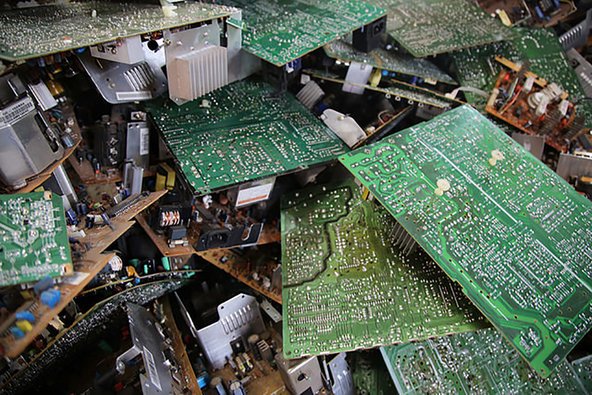California certainly leads the world in environmental policy, but did you know that California state agency CalRecycle oversees the nation’s largest electronics recycling program? CalRecycle is widely considered a model for sound electronics policy, and it’s vaunted as the most successful recycling program in the country. In fact, since launching 15 years ago, they’ve cumulatively diverted 2.2 billion pounds of CRT glass and other hazardous electronics from landfills.
After convening in a packed Sierra Hearing Room in Sacramento earlier this month, CalRecycle just released a report that maps out the future of electronics recycling in California. One of their major findings concluded that Right to Repair legislation is necessary to “provide incentives for repair and reuse of electronic devices, and facilitate collaboration between manufacturers and repair and reuse organizations.”
Earlier this year, the California Right to Repair Act (Bill AB2110) was introduced by Assemblywoman Susan Talamantes-Eggman (D, Stockton). Unfortunately, it was defeated in part by Apple’s concerted lobbying efforts. And despite widespread public support for the nineteen Right to Repair bills introduced across the country, none have passed yet.
Until now, policymakers have taken mild measures to influence product design. Back in 2003, they passed SB 20, which forced manufacturers to pay for recycling. This still stands as California’s current electronics law. They hoped that by holding companies accountable, it would incentivize them to create more reusable and recyclable products. Their reasoning was that if products were easy to recycle, manufacturers would have to pay smaller fees—this way, everyone wins. Right?
Wrong. Well, kind of. While it’s been successful for recycling products, “SB 20 and the resulting [electronic waste] payment system do not encourage reuse. In fact, the current [electronic waste] ‘cancellation’ requirements serve as a deterrent, because recyclers can only receive payment once they demonstrate they have dismantled a [device]; no entity is paid if they collect a [device] and then repair and make it available for reuse.”
That’s a problem. As our electronics have gotten smaller and smaller, recycling has become less and less cost-effective:
“Electronic devices overall are decreasing in size, and often have less intrinsic scrap material value, yet they are also becoming more difficult and costly to manage – i.e., they do not contain as many precious metals as older devices did, and they are not designed to be readily dismantled for recycling. Since [electronic waste] payments are weight-based, payments to collectors and recyclers are also decreasing, even as labor costs to dismantle the lightweight devices are increasing. Meanwhile, global economics are disrupting commodity markets and lowering scrap values.”
This leaves us with a higher demand for recycling than makes sense to supply.
To address this, CalRecycle proposes pursuing a circular economy, which “keeps products, components, and materials at their highest utility and value for as long as possible to preserve the embedded labor, material, and capital costs.” This approach is highly popular in Europe, where Parliament voted last summer in favor of more repair-friendly policies to create more local jobs.

Right to Repair is a critical step towards developing a circular economy. And moving in this direction is a major policy shift for California—one that is also generally opposed by electronics manufacturers. Walter Alcorn of the Consumer Technology Association warned against some of the recommendations in the report: “Your program is the most successful state recycling program in the country. Be careful about changing it.” HP, on the other hand, broke ranks with their association as a manufacturer and expressed general support for California’s movement towards a circular economy.
We’re not alone in advocating for Right to Repair legislation. Californians Against Waste spoke this week in support of CalRecycle’s legislation, while CalPIRG, Repair.org, EFF, and Consumers Union are also on the record for supporting the legislation.
Even though CalRecycle has made great strides in improving recycling, 55 billion dollars of electronics value is still lost worldwide each year as a result of being trashed instead of reused. To support their new position, CalRecycle’s Shirley Wild-Wagner poses this question: “How do we decrease the environmental impact and increase the economic usefulness?” Well, that’s a loaded question. But a Right to Repair law in California would certainly be a major step in the right direction.




Één opmerking
How can I tell if my state has Right to Repair legislation?
Debbie - Antwoord